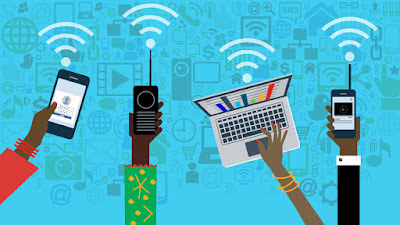IS USING INTERNET SAFE?


According to recent statistics, there are quite 500 million email users within the world. Which may be a huge marketplace for malicious organizations and individuals.

It is not about being alarmist, but the truth is that on
the web there are all types of tricks and tricks designed to get some sort of
enjoy users. And today most of these threats are available the shape of email
messages.
In this guide we shall identify what these threats are and
at an equivalent time, offer an entire list of tips and measures to require
under consideration to continue employing a communication system as common as
email, with the very best security guarantees.
What are the foremost frequent dangers related to
email?
The
main threats within the use of email are:
· Spam
· Phishing
· Scams
· Emails
with malicious attachments
· Hoax
or fake message chains
· Tips
for safe use of email
There
are numerous tips to follow to use email safely, many of them common sense:
· General
advice
· Use
different email accounts
A good practical tip is to stay multiple email accounts for
various uses.
It is recommended to use two or three different accounts:
i.
One for work ,
ii.
Another for private use and
iii.
A third for subscriptions and receipt of data.
The work account should be used exclusively for work
related issues. The second email account should be used for conversations with
our personal contacts and therefore the third email account should be wont to
be exposed on the web, using it for subscriptions to newsletters and other
sources of data, without problem that it are often captured.
Likewise, if we've to supply our email account on any
website, we must use this third email account. Probably, it'll be during this
third account where we'll receive most of the SPAM or suspicious mail. But the
remainder we'll have more protected.
Don't use email regularly to send and receive sensitive
information
If you would like to send important or sensitive data
through email, confirm that the sending (SMTP) and receiving (POP3 / IMAP)
protocols configured within the client are secure.
Use
Blind Copy Option (BCC)
When we include an individual's email addresses within the
"BCC" field we send hidden emails and none of the recipients can see
the addresses of the opposite email recipients. While if we use "CC",
if the recipients are going to be seen.
When we send mail to a various group of individuals without
using the "BCC" we jeopardize privacy and security.
It is enough for a spammer to urge all the emails and immediately
all the recipients on our list are going to be bombarded with SPAM or phishing.
Also, many email programs are configured by default to automatically add new
incoming email addresses to the phonebook.
This means that folks within the group receiving the
message will have inadvertently added the whole list to their address book. And
as a consequence, if the pc of any of those users is infected with malware,
it's going to be sending SPAM silently without it knowing.
Be
prudent when answering
Although mail clients usually have the choice of replying
only to the sender by default, sometimes by mistake we will select the choice
to "Reply to all". And include everyone who was within the original
email within the response, with any consequences which will have.
Beware
of forwarding
In many cases, SPAM comes from email forwarding.
Forwarding emails are often an excellent thanks to
communicate with someone without having to write down something lengthy.
But when an email is forwarded, the recipients of the e-mail
are automatically added to the list within the body of the message because the
chain is continuously in motion, more and more receivers are added to the list.
If that email finally reaches a spammer, they will line up
of an outsized number of addresses immediately. It only takes a couple of
seconds to erase all received email addresses before forwarding some or all of
the e-mail. And this will prevent our contacts from being victims of SPAM or
phishing through our fault.
Encrypt
your important emails
It doesn't matter what percentage precautions you're taking
to attenuate the probabilities of your email being controlled by intruders. You
ought to always assume that somebody else is watching whatever goes in and out
of your computer.
Given this assumption, it's important that you simply
encrypt your emails to make sure that if someone is monitoring your account, a
minimum of they can't access what you're sending.
Comments
Post a Comment